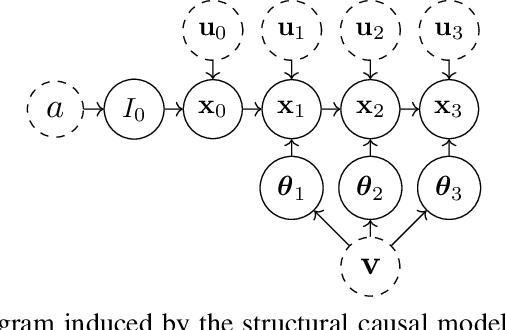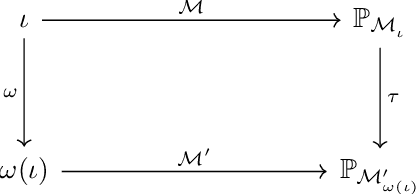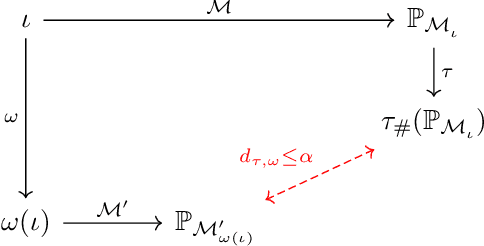Anisoara Calinescu
SAGE: Scalable Ground Truth Evaluations for Large Sparse Autoencoders
Oct 09, 2024



Abstract:A key challenge in interpretability is to decompose model activations into meaningful features. Sparse autoencoders (SAEs) have emerged as a promising tool for this task. However, a central problem in evaluating the quality of SAEs is the absence of ground truth features to serve as an evaluation gold standard. Current evaluation methods for SAEs are therefore confronted with a significant trade-off: SAEs can either leverage toy models or other proxies with predefined ground truth features; or they use extensive prior knowledge of realistic task circuits. The former limits the generalizability of the evaluation results, while the latter limits the range of models and tasks that can be used for evaluations. We introduce SAGE: Scalable Autoencoder Ground-truth Evaluation, a ground truth evaluation framework for SAEs that scales to large state-of-the-art SAEs and models. We demonstrate that our method can automatically identify task-specific activations and compute ground truth features at these points. Compared to previous methods we reduce the training overhead by introducing a novel reconstruction method that allows to apply residual stream SAEs to sublayer activations. This eliminates the need for SAEs trained on every task-specific activation location. Then we validate the scalability of our framework, by evaluating SAEs on novel tasks on Pythia70M, GPT-2 Small, and Gemma-2-2. Our framework therefore paves the way for generalizable, large-scale evaluations of SAEs in interpretability research.
A multi-objective combinatorial optimisation framework for large scale hierarchical population synthesis
Jul 03, 2024



Abstract:In agent-based simulations, synthetic populations of agents are commonly used to represent the structure, behaviour, and interactions of individuals. However, generating a synthetic population that accurately reflects real population statistics is a challenging task, particularly when performed at scale. In this paper, we propose a multi objective combinatorial optimisation technique for large scale population synthesis. We demonstrate the effectiveness of our approach by generating a synthetic population for selected regions and validating it on contingency tables from real population data. Our approach supports complex hierarchical structures between individuals and households, is scalable to large populations and achieves minimal contigency table reconstruction error. Hence, it provides a useful tool for policymakers and researchers for simulating the dynamics of complex populations.
Causally Abstracted Multi-armed Bandits
Apr 26, 2024



Abstract:Multi-armed bandits (MAB) and causal MABs (CMAB) are established frameworks for decision-making problems. The majority of prior work typically studies and solves individual MAB and CMAB in isolation for a given problem and associated data. However, decision-makers are often faced with multiple related problems and multi-scale observations where joint formulations are needed in order to efficiently exploit the problem structures and data dependencies. Transfer learning for CMABs addresses the situation where models are defined on identical variables, although causal connections may differ. In this work, we extend transfer learning to setups involving CMABs defined on potentially different variables, with varying degrees of granularity, and related via an abstraction map. Formally, we introduce the problem of causally abstracted MABs (CAMABs) by relying on the theory of causal abstraction in order to express a rigorous abstraction map. We propose algorithms to learn in a CAMAB, and study their regret. We illustrate the limitations and the strengths of our algorithms on a real-world scenario related to online advertising.
Interventionally Consistent Surrogates for Agent-based Simulators
Dec 18, 2023



Abstract:Agent-based simulators provide granular representations of complex intelligent systems by directly modelling the interactions of the system's constituent agents. Their high-fidelity nature enables hyper-local policy evaluation and testing of what-if scenarios, but is associated with large computational costs that inhibits their widespread use. Surrogate models can address these computational limitations, but they must behave consistently with the agent-based model under policy interventions of interest. In this paper, we capitalise on recent developments on causal abstractions to develop a framework for learning interventionally consistent surrogate models for agent-based simulators. Our proposed approach facilitates rapid experimentation with policy interventions in complex systems, while inducing surrogates to behave consistently with high probability with respect to the agent-based simulator across interventions of interest. We demonstrate with empirical studies that observationally trained surrogates can misjudge the effect of interventions and misguide policymakers towards suboptimal policies, while surrogates trained for interventional consistency with our proposed method closely mimic the behaviour of an agent-based model under interventions of interest.
JAX-LOB: A GPU-Accelerated limit order book simulator to unlock large scale reinforcement learning for trading
Aug 25, 2023



Abstract:Financial exchanges across the world use limit order books (LOBs) to process orders and match trades. For research purposes it is important to have large scale efficient simulators of LOB dynamics. LOB simulators have previously been implemented in the context of agent-based models (ABMs), reinforcement learning (RL) environments, and generative models, processing order flows from historical data sets and hand-crafted agents alike. For many applications, there is a requirement for processing multiple books, either for the calibration of ABMs or for the training of RL agents. We showcase the first GPU-enabled LOB simulator designed to process thousands of books in parallel, with a notably reduced per-message processing time. The implementation of our simulator - JAX-LOB - is based on design choices that aim to best exploit the powers of JAX without compromising on the realism of LOB-related mechanisms. We integrate JAX-LOB with other JAX packages, to provide an example of how one may address an optimal execution problem with reinforcement learning, and to share some preliminary results from end-to-end RL training on GPUs.
Generative AI for End-to-End Limit Order Book Modelling: A Token-Level Autoregressive Generative Model of Message Flow Using a Deep State Space Network
Aug 23, 2023Abstract:Developing a generative model of realistic order flow in financial markets is a challenging open problem, with numerous applications for market participants. Addressing this, we propose the first end-to-end autoregressive generative model that generates tokenized limit order book (LOB) messages. These messages are interpreted by a Jax-LOB simulator, which updates the LOB state. To handle long sequences efficiently, the model employs simplified structured state-space layers to process sequences of order book states and tokenized messages. Using LOBSTER data of NASDAQ equity LOBs, we develop a custom tokenizer for message data, converting groups of successive digits to tokens, similar to tokenization in large language models. Out-of-sample results show promising performance in approximating the data distribution, as evidenced by low model perplexity. Furthermore, the mid-price returns calculated from the generated order flow exhibit a significant correlation with the data, indicating impressive conditional forecast performance. Due to the granularity of generated data, and the accuracy of the model, it offers new application areas for future work beyond forecasting, e.g. acting as a world model in high-frequency financial reinforcement learning applications. Overall, our results invite the use and extension of the model in the direction of autoregressive large financial models for the generation of high-frequency financial data and we commit to open-sourcing our code to facilitate future research.
Some challenges of calibrating differentiable agent-based models
Jul 03, 2023



Abstract:Agent-based models (ABMs) are a promising approach to modelling and reasoning about complex systems, yet their application in practice is impeded by their complexity, discrete nature, and the difficulty of performing parameter inference and optimisation tasks. This in turn has sparked interest in the construction of differentiable ABMs as a strategy for combatting these difficulties, yet a number of challenges remain. In this paper, we discuss and present experiments that highlight some of these challenges, along with potential solutions.
Bayesian calibration of differentiable agent-based models
May 24, 2023Abstract:Agent-based modelling (ABMing) is a powerful and intuitive approach to modelling complex systems; however, the intractability of ABMs' likelihood functions and the non-differentiability of the mathematical operations comprising these models present a challenge to their use in the real world. These difficulties have in turn generated research on approximate Bayesian inference methods for ABMs and on constructing differentiable approximations to arbitrary ABMs, but little work has been directed towards designing approximate Bayesian inference techniques for the specific case of differentiable ABMs. In this work, we aim to address this gap and discuss how generalised variational inference procedures may be employed to provide misspecification-robust Bayesian parameter inferences for differentiable ABMs. We demonstrate with experiments on a differentiable ABM of the COVID-19 pandemic that our approach can result in accurate inferences, and discuss avenues for future work.
Digital Twins: State of the Art Theory and Practice, Challenges, and Open Research Questions
Nov 06, 2020

Abstract:Digital Twin was introduced over a decade ago, as an innovative all-encompassing tool, with perceived benefits including real-time monitoring, simulation and forecasting. However, the theoretical framework and practical implementations of digital twins (DT) are still far from this vision. Although successful implementations exist, sufficient implementation details are not publicly available, therefore it is difficult to assess their effectiveness, draw comparisons and jointly advance the DT methodology. This work explores the various DT features and current approaches, the shortcomings and reasons behind the delay in the implementation and adoption of digital twin. Advancements in machine learning, internet of things and big data have contributed hugely to the improvements in DT with regards to its real-time monitoring and forecasting properties. Despite this progress and individual company-based efforts, certain research gaps exist in the field, which have caused delay in the widespread adoption of this concept. We reviewed relevant works and identified that the major reasons for this delay are the lack of a universal reference framework, domain dependence, security concerns of shared data, reliance of digital twin on other technologies, and lack of quantitative metrics. We define the necessary components of a digital twin required for a universal reference framework, which also validate its uniqueness as a concept compared to similar concepts like simulation, autonomous systems, etc. This work further assesses the digital twin applications in different domains and the current state of machine learning and big data in it. It thus answers and identifies novel research questions, both of which will help to better understand and advance the theory and practice of digital twins.
 Add to Chrome
Add to Chrome Add to Firefox
Add to Firefox Add to Edge
Add to Edge